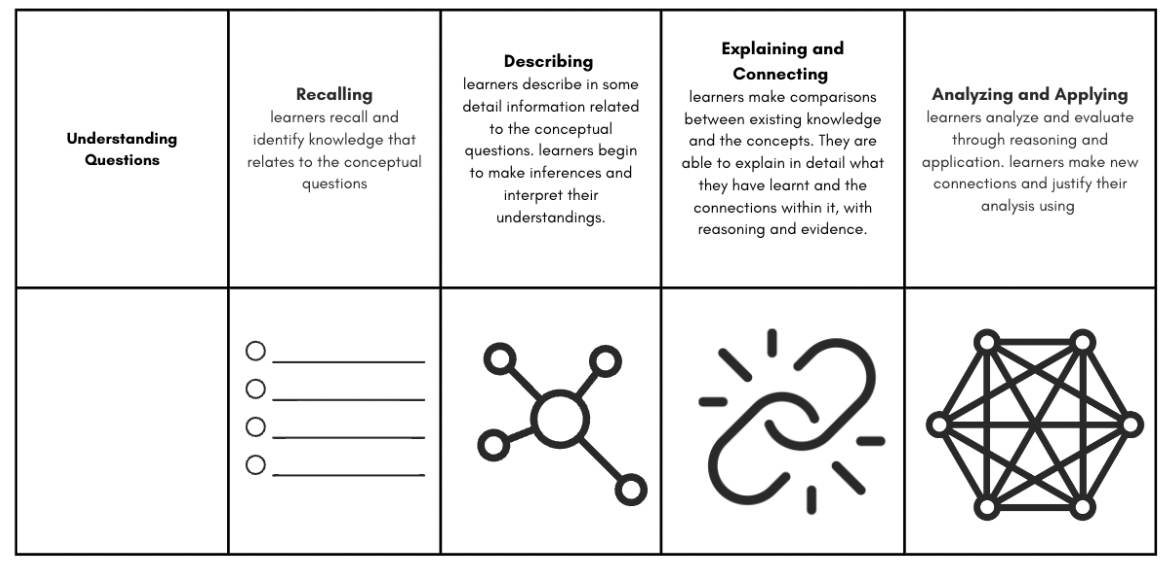WHAT IS CONTINUOUS ASSESSMENT
Continuous assessment is relational. It promotes a developing relationship between the educator and learner and the learner and learners. It puts the learner at the center, where assessment and learning are co-constructed with the educator. Understanding that learning and assessment is a shared responsibility that focuses on trust and honors the learner and their journey.
Tania Lattanzio and Andrea Muller (2023)
Continuous assessment is an ongoing process of evaluating and providing feedback on learners' conceptual understanding throughout a learning period. It takes the emphasis off relying on a final assessment. It involves the learner as a part of the learning process, where they, together with the educator, are continuously considering their current conceptual understanding and how to further develop this. “It’s an assessment designed squarely to feed into the learning process and make the learning stronger.” David Perkins, 2009.
It involves using a variety of assessment methods to gauge learners' conceptual understanding at different stages of their learning journey. This approach emphasizes regular reflection and feedback, allowing both learners and educators to monitor progress, identify areas of strength and make adjustments to the learning as needed. Continuous assessment aims to promote deeper learning, improve learner engagement, and support individualized learning pathways. This process can help learners to stay focused and motivated as they continue to learn.
We view continuous assessment as interwoven throughout the learning process which means the teaching is an integral part of this assessment approach. It is key to establishing learners' current and changing thinking of understanding. By regularly monitoring learner’s thinking and understanding, educators and learners can adjust their approaches and provide targeted support and scaffolding to ensure learners have a deeper and more complete understanding of the concepts.
Building Conceptual Learning and Understanding
In developing continuous assessment we advocate for a Rubric for Understanding. This rubric (see below) builds on conceptual learning throughout the learning process, with each level requiring a deeper level of conceptual understanding. The rubric is co-constructed with learners as they consider what command terms or evidence would be applicable at each level.
As Hattie and Donoghue (2016) state “Students who can articulate or are taught .. success criteria are more likely to be strategic in their choice of learning strategies, more likely to enjoy the thrill of success in learning, and more likely to reinvest in attaining even more success criteria.”
Learners, together with educators consider what evidence demonstrates their current level of understanding and what steps will assist them in further developing their understanding.
WHY CONTINUOUS ASSESSMENT
Continuous assessment is valuable to both educators and learners as it:
PROVIDES TIMELY FEEDBACK
Timely and ongoing feedback can assist learners to identify areas where they need to clarify concepts by making adjustments to their learning strategies.
IDENTIFY AREAS FOR IMPROVEMENT
Educators and learners use continuous assessment to identify current understanding and what is required to further challenge learners in their conceptual thinking.
IMPROVE TEACHING
Educators and learners can use evidence to reflect and plan for how they might revisit the concepts to assist learners in deepening their understanding of the learning outcomes.
PROVIDE STUDENT ENGAGEMENT
By providing frequent and varied opportunities for learners to demonstrate their understanding of concepts, continuous assessment increases engagement and motivation. The learner is involved.
SUPPORT EVALUATION
Continuous assessment provides evidence of learning that both the learner and educator evaluate in order to consider where the learner is in the learning journey.
"For students truly to be able to take responsibility for their learning, both teacher and students need to be very clear about what is being learnt, and how they should go about it. When learning and the path towards it are clear, research shows that there are a number of important shifts for students. Their motivation improves, they stay on-task, their behaviour improves and they are able to take more responsibility for their learning” Absolum, M. (2006).
References:
Absolum, M. (2006). Clarity in the classroom : using formative assessment-building learning-focused relationships. Auckland, N.Z.: Hodder Education, pp.28–46.
Hattie, J.A.C. and Donoghue, G.M. (2016). Learning strategies: a synthesis and conceptual model. npj Science of Learning, 1(1). doi:https://doi.org/10.1038/npjscilearn.2016.13.
Hattie, J., & Timperley, H. (2007). The power of feedback. Review of Educational Research, 77(1), 81–112.
Perkins, D. (2009). Making Learning Whole: How Seven Principles of Teaching Can Transform Education. San Francisco, CA: Jossey-Bass.






